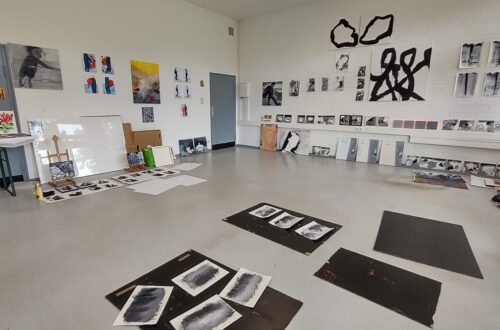We know, setting a price for your artwork is one of the most tricky aspects of being an artist. How do you put a concrete price on your creativity? It is definitely a difficult question. One thing that’s for certain is plenty of uncertainty. However, when it comes to how to price your art, worry not! As usual, your friends at balthasart are here to help. No matter how inconsistent the market may seem, there are some concrete strategies you can employ. Here are some of our best tips for how to price your art!
Define Your Style and Market Niche
Before you attach any price tag to any piece of art, it is important to understand your own style and where you stand in the market. Do a thorough analysis and really think hard about the way you create. What kind of style do you gravitate towards? What are the motifs, subjects and themes that show up the most in your works? What kind of materials are you using to make your art? How long and how much labor does it take to create a piece? Who are you making art for? What interests do the fans of my art have, and why would they gravitate towards my works? These are just a handful of the many questions you can ask yourself as you start to think of how to price your art. It may seem redundant to do this exercise, but it forces you to put into perspective all the aspects of your process and style. This is imperative information for eventually figuring out how much your pieces will cost.

Do Some Research
Now that you have a full idea and understanding of your own process and style, it is time to do some comparative research. You know too well how your art looks, the market you are going for, how long it takes to create and what resources you need. To get a good idea for how to price your art, you can compare it to that of artists who are similar to you. You can always research online, but you can also go to gallery and studio openings in your area to get an idea. You want to pay particular attention not just to the art styles of these other artists, but also their respective experiences. Focus on artists who have been making, showing and selling art for around as long as you have. Be careful not to be too specific in your research, get a feel for how the market is in general! This way, you can be led to making a smart choice when estimating your prices.
Get Formulaic
We know that your artwork is a special creation that you put a lot of effort, love and emotion into. However, when it comes to putting prices on artworks, you need to remove the emotional aspect a bit and go for what logically makes sense for the value of the piece. It is time to put the feelings aside and break out some trusty math formulas to help us be objective!
Centimeters Squared x Euro Amount + Materials
This is one of the simplest ways to determine your prices. Measure the length and width of your artwork and multiply them together to get the amount of centimeters squared. Attribute an amount of money (that corresponds well with your reputation and credentials) to each centimeter squared. Now, multiply the two numbers together, add your estimated material cost, and there you have it!
Hourly Rate x Hours Spent + Materials
Another formula that works well for determining the value of your art is to calculate the hourly wage of your labor, combined with the cost of materials. This method can be most effective for people who are looking to sell for the first time. Give yourself a respectable starting wage, most would suggest starting somewhere around 20€ an hour for beginners. Now multiply that hourly rate by the amount of hours that it took you to complete the artwork. Factor in your material costs, and now you have an idea for the price!

Looking Ahead
Now that you have formulated your prices, and posted some artworks, as the sales come in there are some things to keep in mind for the future. Hopefully, there will soon come a time where you have gained some good clientele and believe that you can justify raising your prices. Hooray, more money! However, we need to make sure that you are careful during this process! Never undersell yourself, but it’s also important to not start overselling yourself after making some sales. Scale your prices up incrementally. If you are gaining attention quickly, it may be tempting to scale the prices way higher! However, once you price your works, you cannot go back down. This won’t look great for your reputation, especially for galleries and collectors. So, as you gain popularity, install yourself in some prestigious residencies and get accepted with some major galleries, it is best to increase prices by only 10-15% increments.
We hope you have found this guide helpful to your career as an artist. Happy selling! As always, the best resource for up-and-coming artists to sell their art is our platform, balthasart! Join the site and be sure to stay tuned to the magazine for more tips!
Want to join our community of up-and-coming artists on balthasart?








One Comment
Pingback: